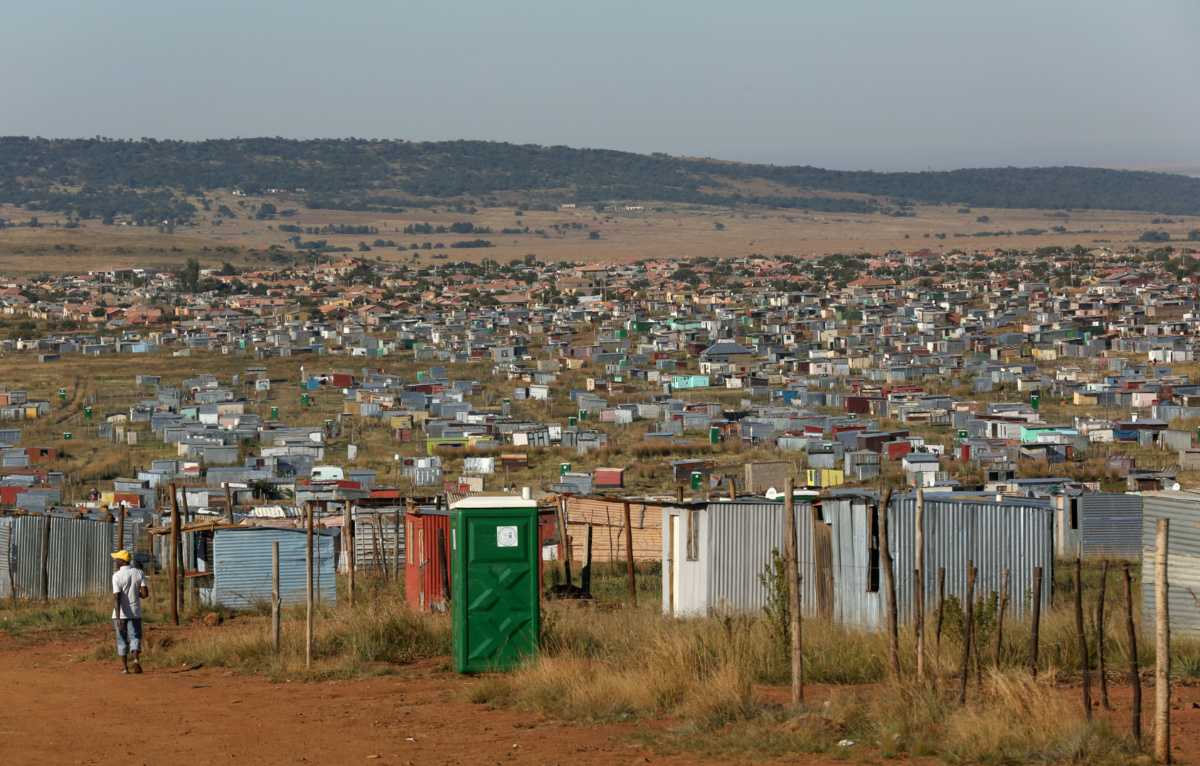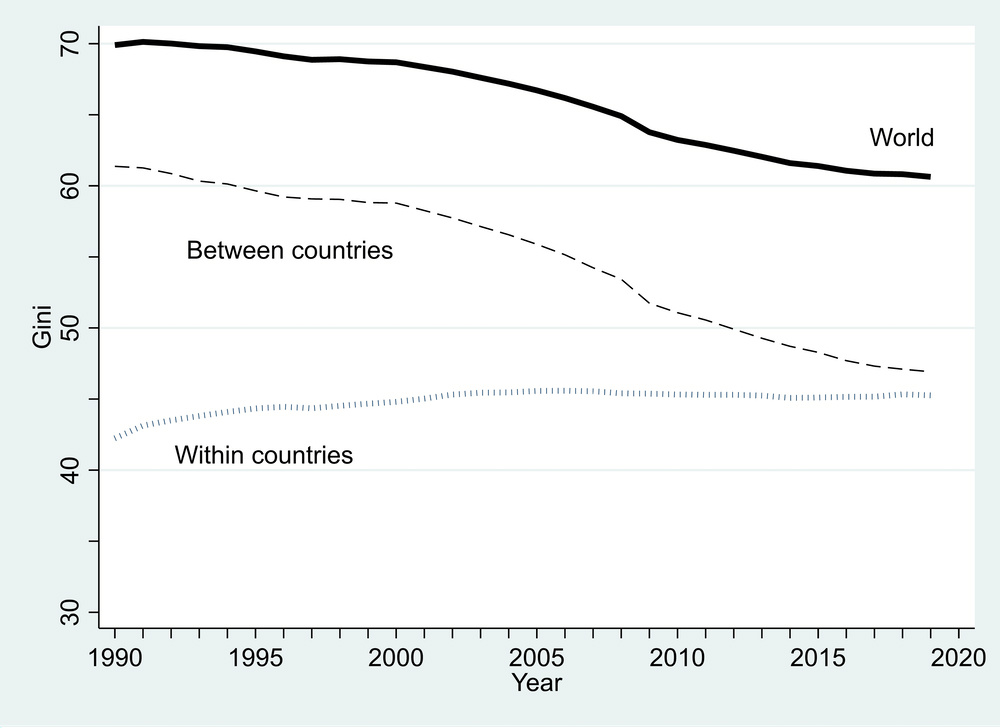
In an article first published on The Conversation,CARLOS GRADÍN, FINN TARP and MURRAY LEIBBRANDT – authors of the book ‘Inequality in the Developing World’, look at what data shows about inequality around the world…
In one of the most unequal countries in the world, South Africa, the poorest 40 per cent have annual incomes of less than $US1,000 per person. The comparable incomes for the richest 10 per cent are more than $US39,000 per person – nearly 40 times higher than those of the bottom 40 per cent.
Those numbers, which are based on data from 2017, are actually something of an improvement on 2008, when the multiple was 50 times. But the gap in income between these groups grew by more than $US10,000 per person over this time. And more than two decades after the end of apartheid, the richest 10 per cent are still predominantly from the white minority group, while the poorest 40 per cent is the “exclusive” preserve of the Black majority.

Lawley informal settlement in the south of Johannesburg, South Africa, on 2nd May, 2019. Inequality is highly persistent in South Africa. PICTURE: Reuters/Siphiwe Sibeko/File photo.
These extreme inequalities show that economic growth has neither been inclusive nor transformative – despite the country having implemented significant policies benefiting people with lower incomes in an effort to improve the disparity.
We’ve found similar situations in many countries – even those such as Brazil, China, India and Mexico where inequality is lower and tackling it has emerged as a fundamental development challenge.
“A fair distribution of income is both a moral imperative and crucial to a socially cohesive society. Excessive income disparity also has negative implications for growth, poverty and human development.”
A fair distribution of income is both a moral imperative and crucial to a socially cohesive society. Excessive income disparity also has negative implications for growth, poverty and human development.
Not a simple story
Inequality does not grow or decline everywhere at the same time and there are no constant or universal trends over time and across countries or regions. Successes are often followed by steps backwards if conditions change, and vice versa, like the recent trend in Latin American countries shows. This complexity sits at the core of the story about inequality.
As we found when collecting the different studies of our book, Inequality in the Developing World, it is fundamental to avoid oversimplifying inequality, whether at the country or global level. Instead, we must pay careful attention to how successful developing countries are trying to address these issues. This is especially important in times of deep economic adjustments and booms and busts.
The study of global income inequality also requires looking at the bigger picture, treating the world as one country. Here, forces such as globalisation or technological progress operate, with potentially asymmetric effects on inequalities within and between countries.
Global inequality has in fact been declining for several decades according to many standard measures. The figure below shows this decline as measured by the Gini index (on which 100 represents maximum inequality). But as you can see, this is driven by declining inequality between countries rather than within them.
Global inequality 1990-present

Bigger economies such as China or India contain large shares of the world’s population – and their development has greatly influenced global inequality. The overall decline is mainly due to fast economic growth in China, which has progressively approached the global mean in income. This has narrowed inequalities between countries by significantly improving the living conditions of hundreds of millions of people.
But it’s much too early to celebrate. Although other developing countries have followed this path to some extent, the drop in global inequality is decelerating. And there is evidence that the poorest have extreme difficulties in keeping up with the rest. Differences between richer and poorer countries remain colossal.
National income inequality
The forces that have helped to narrow inequality among countries have had the opposite impact on inequalities within countries. As shown in the figure, the aggregate contribution of within-country inequality to the global measure has risen. This is true even of China and India.
These within-country trends – often of increasing inequality – are crucial to our understanding of the problem. It is this which ultimately frames people’s lives and perceptions and is the focus of policies to address inequality. The five country studies in our volume show that – at this level too – a variety of factors affect final measured inequality. There is no single general pattern applying in every period or area.
Functional and inclusive local labour markets that enable people of all backgrounds to earn a decent living matter greatly. They are the primary source of income for the majority of the population. To lower inequality in the labour market, it is essential to achieve more equal access to the sorts of skills and capital that enable workers to get quality jobs and decent earnings.
Macro factors, such as the degree of industry specialisation in a country or the existence of markets with adequate regulations and good governance, matter as well. Of particular importance is the capacity of the public sector to offset major forces that cause inequality and to provide direct access to basic goods and services.
Despite most developing countries having small welfare states compared to more developed countries, some countries have experienced varying degrees of success in addressing income inequality through active and innovative policies such as labour market reforms. Brazil and Mexico, for example, have achieved success with minimum wages and progressive tax and benefit structures.
While inequality has been rising in recent decades within numerous countries, representing the majority of the world’s population, this isn’t true everywhere. Brazil and Mexico have seen it declining even as others such as South Africa have been living with stable but extremely high inequality.
But generally, within-country inequality is highly persistent and dampens social mobility. Inequality does not fall automatically as countries develop or deploy more democratic or inclusive institutions, as was previously thought. Inequality of income is the result of a complex set of intersecting inequalities, including in education, health and the labour market.
Tackling inequality therefore requires a determined, coordinated and sustained collective effort. Our study contributes needed evidence for action in this challenging area of socio-economic development and sets out a framework for identifying effective policy measures.![]()
Carlos Gradín, is a Research Fellow, UNU-WIDER, United Nations University; Finn Tarp is professor of economics at the University of Copenhagen, and Murray Leibbrandt is NRF Chair in Poverty and Inequality Research and director of the Southern Africa Labour and Development Research Unit, University of Cape Town and UNU-WIDER Non-Resident Senior Research Fellow, University of Cape Town. This article is republished from The Conversation under a Creative Commons license. Read the original article.





